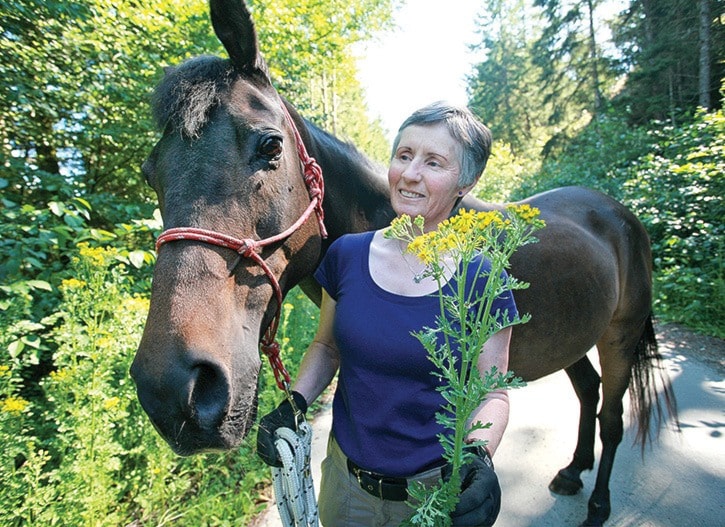By Kathy Atherton
Special to the Gazette
It’s summer, and the tansy ragwort, with its striking yellow, metre-high plants, is back, relentlessly invading the fields and roadsides of Metchosin and surrounding communities.
To combat the spread of this weed, the District of Metchosin holds its second annual Tackling the Tansy Day this Sunday (July 27).
Inspired by Metchosin residents’ actions, East Sooke residents are also joining in the fight to rid the area of these plants that proliferate at their roadsides and infields.
Capital Regional District Parks also has an Invasive Species Team that may be enlisted to remove the harmful plants from CRD properties. How wonderful it would be if the whole Lower Island took up the challenge!
Why bother? Because horses, cows and goats that ingest tansy ragwort secreted in hay or pasture can suffer liver damage, which can lead to poor condition and death. Most poisonings are the result of eating small quantities over an extended period, with the effects accumulating over time.
The highest concentrations of the toxic alkaloids occur in the flowers, and dilute forms of the poison have been found in honey and milk products. Although the potential risk to humans is considered very slight, caution should be observed when using known contaminated products over the long term.
Three biological agents are used to help control the spread of tansy ragwort. The most conspicuous is the beautiful red-and-black cinnabar moth, whose ravenous yellow and black striped caterpillars can defoliate a plant in no time flat. If you find plants full of the caterpillars, you can transport them “lock stock and barrel” to another patch of tansy for them to infest and ingest.
A seed-head fly and a root-eating flea beetle have also been recruited to the control arsenal and the root beetle seems to be making some headway in reducing populations. Sheep grazing can effectively control tansy ragwort if pastures do not get too heavily infested. But ultimately, manual removal is the best option for roadsides, trails, gardens and fields.
Tansy ragwort’s brilliant yellow blooms are easy to spot and the plants’ shallow, fibrous root system makes them easy to dislodge. But, if left too late, even uprooted plants might continue maturing the seeds. In this case it might be advisable to amputate and bag the flower heads. Wearing gloves is recommended.
These plants are quickly infesting the whole of southern Vancouver Island, as Scotch broom did more than 100 years ago. Volunteers need not limit themselves to one day – develop a habit to pluck the offending plants for the rest of the summer and a big difference will be seen by next year alone.
To report sightings of the weed or for more information, contact Kathy Atherton at 250-474-1016 or mkatherto@shaw.ca.
